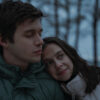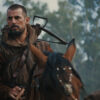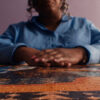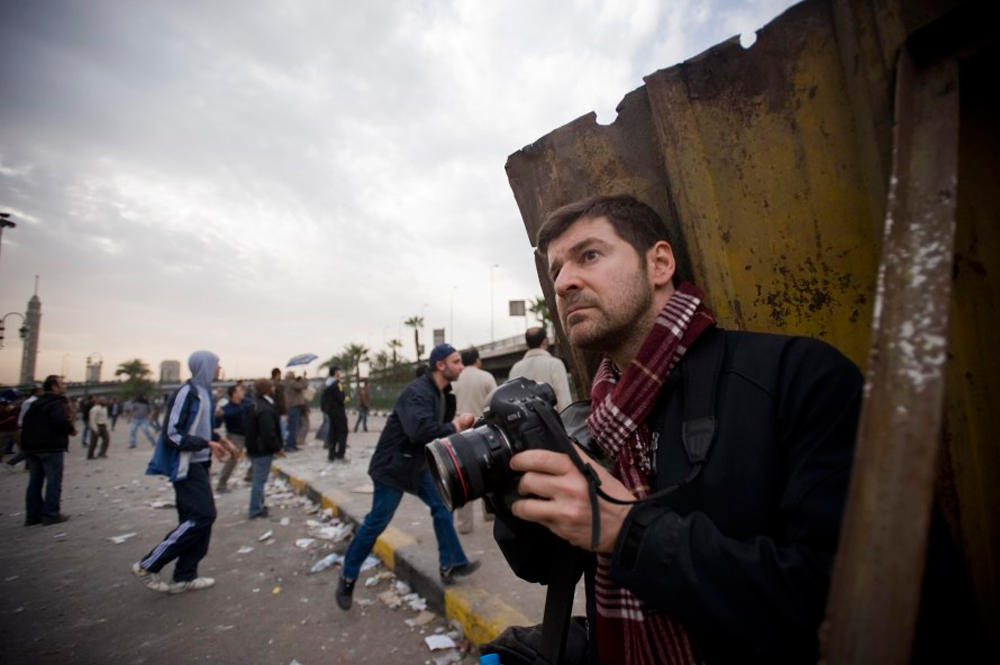“Hondros” opens with the sound of gunfire, as the photojournalist Chris Hondros scrambles to snap pictures in the midst of a war, stopping to take a phone call where he tells the person on the other end of the line, “Let me call back in a half-hour.”
It’s a thrilling introduction, but slightly misleading as the film’s director and Hondros’ longtime best friend Greg Campbell makes clear that Hondros, while singularly confident, wasn’t one to treat war casually or thrust himself into the center of the action for an adrenaline rush. Instead, you come to realize you’re watching someone whose recognition of his own unique personality and the humanity in others, even in the most dire of circumstances, drove him to believe he could make a difference in world affairs. As Hondros’ boss Jonathan Klein, the CEO of Getty Images, says at one point in the film, “Chris wanted photos to tell a story about the people impacted by the disaster rather than the disaster itself.”
Like Hondros, the absorbing and tremendously moving film that Campbell has made in his friend’s name following his untimely death in 2011 is always on the move, beginning in the days when the two worked for the student newspaper at their high school and the budding photojournalist talked his way into passes for Bill Clinton’s inaugural ball and following Hondros as he made a name for himself in Kosovo, Angola, Nigeria and Sierra Leone. Presenting his work on the big screen from these regions, the film could be considered rewarding enough as one striking image is displayed after another, but Campbell does his subject justice by emulating Hondros’ ability to distill the essence of a complicated situation in disarmingly human terms, having respected peers of the enigmatic photojournalist reflect on the circumstances in which the photos were taken, as well as recordings of the man himself.
Despite Campbell’s own personal connection to Hondros, the film isn’t filtered through a nostalgic lens to make it feel so heartfelt, but rather the sense of genuine compassion that emerges from the stories about him, devoting a particularly touching sequence to arguably his most famous photo, taken in 2003 during the Liberian Civil War of a young soldier named Joseph Duo. While the aftermath of this photo is best left for the film to tell, it allows for “Hondros” to extend into a far larger consideration of what responsibilities journalists have to their subjects after sharing their stories with the world or to their peers in the trenches with them, as well as just one of many demonstrations of how Hondros prioritized others over himself or his work, no matter how obsessive he was about the latter.
It is a mix of the wealth of material that Campbell collects and cogent editing by Jenny Golden, Davis Coombe and Cindy Lee that show the ripple effect of not only Hondros’ photographs, but his attitude towards covering conflicts and the toll for those caught in the crossfire. His pictures may have been worth a thousand words — and then some — but “Hondros,” a spirited portrait of a truly unique individual — will likely leave you speechless.
“Hondros” does not yet have U.S. distribution.




